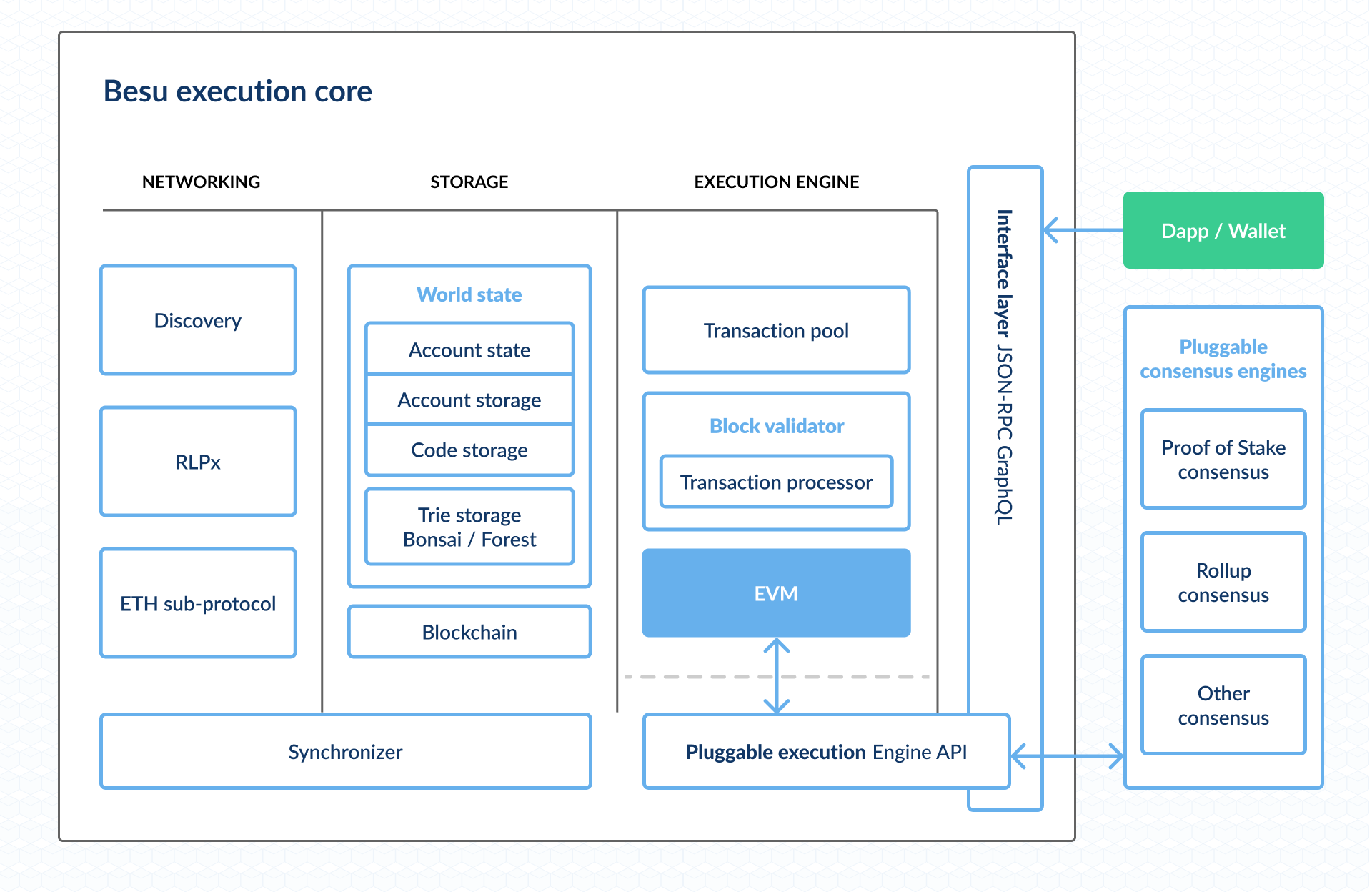Hyperledger Besu
What is Hyperledger Besu
Hyperledger Besu is an Open Source and Community Supported Ethereum client designed to be enterprise-friendly for both public and private permissioned network use cases, with an extractable EVM implementation. Catalyst Blockchain Manager supports the permissioned version of Hyperledger Besu and leverages the three available Proof of Authority consensus protocols, IBFT 2.0, QBFT, and Clique. Hyperledger Besu is an ideal choice for organizations looking to work within the wider Ethereum ecosystem, while reducing gas fees and adding scalability, privacy, and permissioning features.
Benefits of Hyperledger Besu on Catalyst:
Hyperledger Besu’s strengths lie in its compatibility with Ethereum, support for private transactions, flexibility in consensus mechanisms, and robust security features. Enabling optional fee scheme implementation and API authentication, Besu’s characteristics suit organizations that wish to create secure, decentralized applications and platforms that permit access by public users:
-
Ethereum Compatibility: Besu is compatible with the Ethereum public network, which means it supports all major Ethereum standards, smart contracts, and decentralized applications (DApps).
-
Support for Private Networks: Besu is well-suited for private or permissioned blockchain implementations, making it ideal for enterprises that wish to use an Ethereum-compatible technology, but require control over who has access to network components and data.
-
Privacy Features: Besu enables private transactions and private contracts within an extractable EVM implementation. These features are crucial for businesses that need to keep certain information confidential, such as transaction value, sender, and receiver.
-
Consensus Protocol Flexibility: With Catalyst for Hyperledger Besu, users can choose from either IBFT 2.0, QBFT, or the Clique consensus protocol, selecting based on the needs of the use case. This permits the network architecture to be determined precisely by requirements like transaction finality, number of validators, etc.).
-
Network Control: Hyperledger Besu allows network participants to customize fee schemes and toggle requirements for API authentication, providing enhanced flexibility and control. This capability enables administrators to effectively manage the costs for network users and to govern access rights, ensuring a tailored and secure blockchain environment.
-
Performance and Scalability: Besu is designed to be performant and scalable, capable of handling large numbers of transactions typical in enterprise settings, whilst reducing gas fees and even offering the option for networks to implement their own independent fee policies.
-
API Support: Besu offers extensive API support, including JSON-RPC making it easy to integrate with existing systems and tools.
-
Security: Developed under the Hyperledger umbrella, Besu boasts a unique combination of open-source affordability and enterprise-grade security, with the notable addition of EVM compatibility.
Hyperledger Besu Architecture
The client architecture consists of three main components: Ethereum core, Storage, and Execution engine. Some of the client’s main features, including the EVM and consensus, are part of the Ethereum core. The EVM is supported by two additional components – a transaction processor and a block validator – which help it run more efficiently. The Ethereum core also includes a transaction pool responsible for storing transaction-related information and a synchronizer, which facilitates the synchronization between the nodes and the network.

While the core client architecture is relatively simple, it can be easily expanded with plugins. This approach is what enables Hyperledger Besu’s modularity. People can use some of the existing open-source Besu plugins or build their own plugins with the help of the Plugin API, which provides access to interfaces facilitating plugin development. The Plugin API also allows developers to take data from any Besu network and then feed it to their own applications and systems.
|
Check Hyperledger Besu Docs To read more about Besu architecture. |